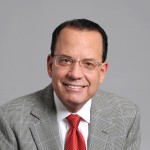
Tax Tiger
Tax Tiger explains why tax avoidance is “rewarded” while tax evasion is punishable by up to five years in prison and a quarter million dollar fine.
Q: What exactly does Tax Avoidance mean?
Tax Tiger: Simply put, Tax Avoidance is practiced by every American who files taxes. For instance, claiming a dependent or mortgage interest for the sake of lowering one’s financial liability to the Federal government are examples of Tax Avoidance.
Q: Must a taxpayer be able to prove his or her Tax Avoidance techniques are legitimate?
Tax Tiger: Yes, and we recommend keeping all records and receipts related to tax deductions and credits.
Q: If Tax Avoidance is legal, why is Tax Evasion a crime?
Tax Tiger: Unlike Tax Avoidance, Tax Evasion is the intentional act of providing the IRS with misleading information in an attempt to reduce one’s tax bill.
Q: What are the penalties for an attempt to defeat or evade tax?
Tax Tiger: According to the IRS, an individual who endeavors to evade all or any portion of their tax bill is guilty of a felony, with penalties including imprisonment of up to five years and fines of up to $250,000.
Q: Who pays for the cost of prosecution?
Tax Tiger: If convicted, the taxpayer is responsible for all court costs associated with his or her case.
Q: Why are there such steep fines and penalties for failure to pay taxes?
Tax Tiger: Tax Evasion is punished to the fullest extent of the law because these funds provide monies for national defense, public education, health care for the elderly, social services, and financial aid to the poor and disabled. As well, taxes fund state and local police and other important community civil services.
Q: What is Circular 230 and how is it pertinent to our discussion of Tax Evasion?
Tax Tiger: Circular 230 contains the rules that Enrolled Agents, CPAs, attorneys, and other legal representation must follow in order to represent a taxpayer in front of the IRS. In essence, it states that the service providers must always act in the best interest of their clients, including advising them on all legal Tax Avoidance avenues.
Q: Why are there negative connotations associated with the term “Tax Avoidance?”
Tax Tiger: Unfortunately, Tax Avoidance is not completely understood by the general public. Even many experienced tax service providers struggle with the difference between evasion and avoidance.
Q: What is one example of a Tax Evasion scheme by employers?
Tax Tiger: Paying an employee in cash to avoid payroll taxes is one way that businesses engaged in Tax Evasion.
About Tax Tiger
In 2002, Kathy Hill founded Tax Tiger–America’s Most Effective Tax Representation Company–in Sacramento, California. Since the firm’s inception, Tax Tiger has saved taxpayers across the nation in excess of $20 million in penalties, interest, and back taxes. The group employs only licensed professionals who meet the highest educational standards in the industry.






